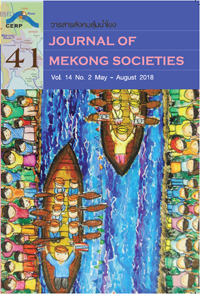The Pronoun SHE in Thai Informal Style
Main Article Content
Abstract
In some languages like Thai, multiple first and second person forms are commonly used to index gender, age, rank and status. It has been pointed out that contact with English as a global language, especially through the media, has resulted in the borrowing of English first and second person pronouns. Recently, however, the third person pronoun SHE has also been observed in informal Thai interaction and in particular on the Internet. The present study focuses on the social indexing of the pronoun SHE in informal Thai. Data were collected from two Thai public web boards, one targeting general readership and the other specifically attracting a gay audience. The data were compared and analyzed in three dimensions, namely public exposure, genders of the referents, and also connotations of the speakers. Data analysis reveals that the pronoun SHE in informal Thai is syntactically different from its English counterpart in that it remains morphologically uninflected for case. It is used primarily among women and gay men. With regard to its expressive and social functions, similar to the pronoun she in some varieties of English, it indexes negative stereotypes of (Western) femininity of the referent. At the same time, SHE when used by gay men, asserts the gay sexual orientation of the speaker. This pronoun borrowing phenomenon may be motivated by the combination of two mechanisms of contact-induced language change: passive familiarity and deliberate decision.


